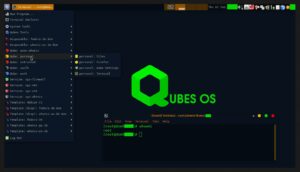Python, with its clear syntax and versatile applications, has become a favorite among developers, students, and hobbyists alike. However, even the most seasoned programmers encounter errors in their code. The ability to effectively debug Python programs is crucial for navigating these hurdles and ensuring smooth project development.
Debugging isn’t just about identifying mistakes; it’s a systematic process of understanding how your code functions, pinpointing where it deviates from expectations, and ultimately refining its behavior. This article will equip you with the tools and techniques to approach Python debugging like a professional, empowering you to resolve issues confidently and efficiently.
Sponsored
Laying the Foundation: Understanding Common Errors
Before going into debugging strategies, it’s essential to familiarize yourself with the types of errors that can occur in Python code.
- Syntax Errors: These are the most common type, arising from violations of Python’s grammatical rules. A misplaced comma, an incorrect keyword, or a missing closing parenthesis can all trigger a syntax error, halting your program’s execution before it even begins.
print("Hello, world!")In this example, the missing closing quotation mark at the end of the string results in a syntax error.
- Logic Errors: These errors occur when your code runs without crashing but produces incorrect or unexpected results. The logic behind your program might be flawed, leading to calculations gone awry, incorrect data processing, or unintended outputs. Identifying these errors often requires careful analysis and testing.
x = 5
y = 10
print(x + y) # Output: 15 (Correct)- Runtime Errors: These errors occur during the execution of your code, when a specific condition arises that your program isn’t equipped to handle. Examples include attempting to divide by zero, accessing an element in a list that doesn’t exist, or opening a file that can’t be found.
result = 10 / 0 # ZeroDivisionError: division by zeroMastering the Debugging Toolkit: Python’s Built-In Tools
Python offers a comprehensive set of tools designed to streamline the debugging process. Let’s explore these essential resources:
print()Statements: The humbleprint()function is your initial weapon in the debugging arsenal. Strategically placedprint()statements within your code allow you to observe the values of variables at different stages, helping you track the flow of execution and identify potential issues.
def calculate_average(numbers):
sum = 0
for number in numbers:
sum += number
print(f"Current sum: {sum}")
average = sum / len(numbers)
return average- Debugger (
pdb): Python’s built-in debugger,pdb, provides powerful interactive debugging capabilities. You can set breakpoints to pause execution at specific lines of code, step through your program line by line, inspect variable values, and even modify them on the fly.
To use pdb, simply add the following line at the beginning of your script:
import pdb
pdb.set_trace() # Set a breakpoint hereassert()Statements: Theassert()function is invaluable for verifying assumptions within your code. It evaluates an expression; if the expression evaluates to False, it raises anAssertionError, halting execution and providing valuable feedback about where the issue lies.
def check_age(age):
assert age >= 0, "Age cannot be negative" # Assertion statement
return age- Logging Module: For capturing more detailed information about your program’s behavior, Python’s
loggingmodule offers a robust framework. You can configure log levels (DEBUG, INFO, WARNING, ERROR, CRITICAL) to control the amount of detail recorded and direct logs to different destinations (console, file).
import logging
logging.basicConfig(level=logging.DEBUG)
logging.debug("This is a debug message")
logging.info("This is an info message")Refining Your Debugging Techniques: Strategies for Success
Beyond Python’s built-in tools, several effective strategies can elevate your debugging prowess:
Isolate the Problem: Begin by narrowing down the scope of the issue. If a large program malfunctions, try commenting out sections of code to pinpoint the problematic area.
Test Incrementally: Make small, incremental changes to your code and test each modification thoroughly. This approach helps you identify the specific change that introduces or resolves an error.
Use Version Control (Git): Utilize version control systems like Git to track changes in your code. This allows you to easily revert to previous versions if necessary and compare different revisions to pinpoint the source of an issue.
Read Error Messages Carefully: Python’s error messages, while sometimes cryptic, often provide valuable clues about the nature of the problem and its location in your code. Learn to interpret these messages effectively.
- Seek Help and Collaboration: Don’t hesitate to consult online resources, forums, or other developers when facing a particularly challenging bug. Sharing your code and explaining the issue can lead to insightful solutions from experienced peers.
Debugging Case Studies: Real-World Scenarios
Let’s examine some common debugging scenarios and illustrate how to apply these techniques effectively:
Case Study 1: Infinite Loop
Imagine you have a function designed to iterate through a list of items, but it unexpectedly enters an infinite loop. Yourprint()statements might reveal that a condition within the loop never becomes False, causing it to repeat endlessly. The solution could involve revising the loop’s termination criteria or identifying a recursive call that lacks a base case.Case Study 2: Incorrect Output
Suppose your program calculates the average of a list of numbers but produces an inaccurate result. Usingprint()statements strategically placed within your calculation logic can help pinpoint where the error occurs. Inspecting variable values at different stages might reveal a misplaced operation, a typographical error, or an incorrect data type being used in the calculation.Case Study 3: File Access Error
When your program attempts to read from or write to a file, you encounter an “IOError.”print()statements can confirm that your file path is correct and that the file exists in the specified location. If the file exists, the issue might lie in your code’s attempt to open or close the file, or it could be related to permissions issues.
Continuous Learning
Debugging is an ongoing learning process. Every encountered bug presents an opportunity to deepen your understanding of Python and develop more robust coding practices. Embrace challenges as learning experiences, document your debugging strategies, and strive to continuously refine your skills.
By mastering these techniques and cultivating a growth mindset, you’ll become proficient in navigating the complexities of Python debugging, empowering yourself to build reliable and efficient software applications.



